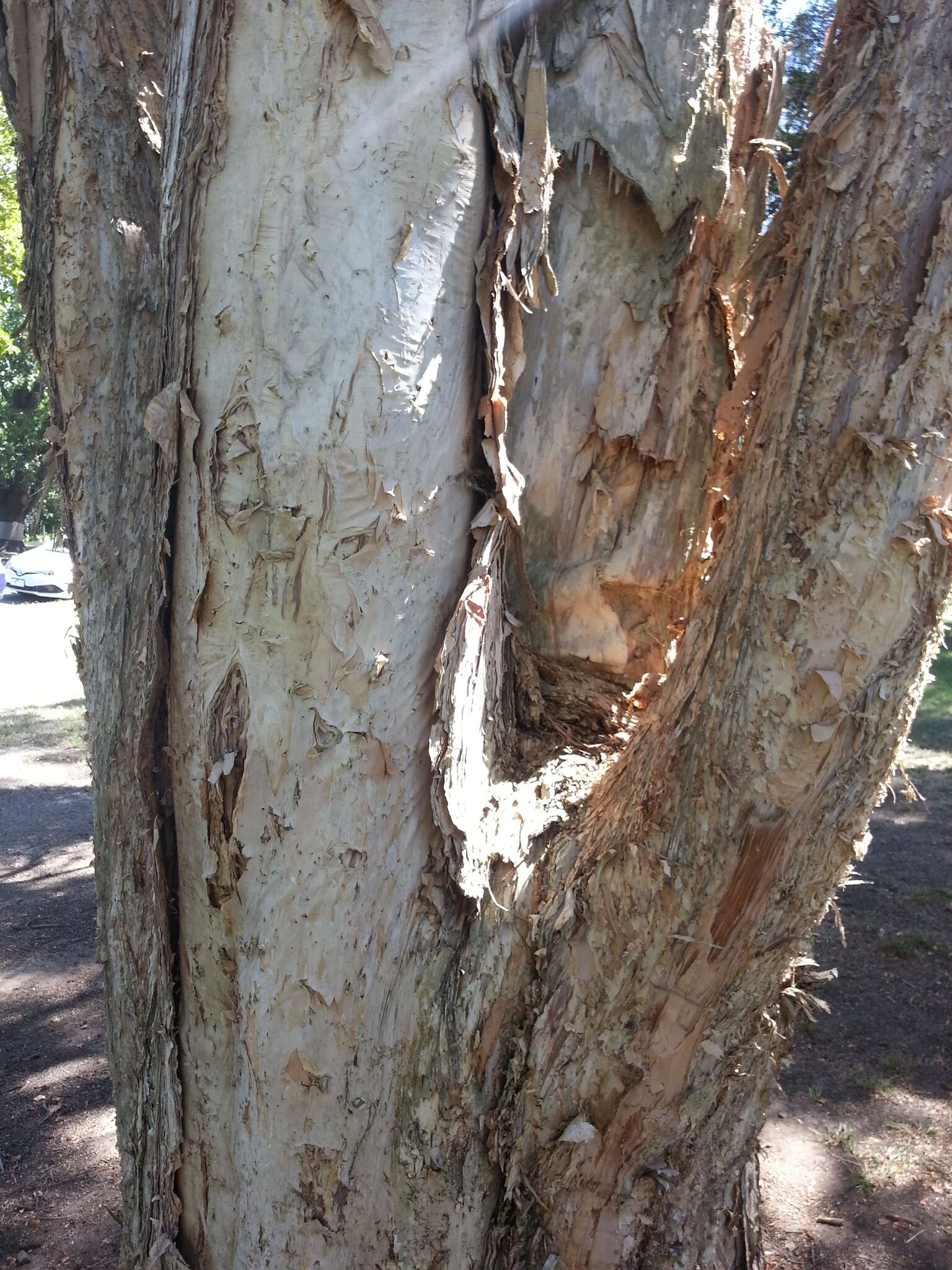
A round tree growing to 10 m tall, branching quite low down, with bark thick, spongy and white. Leaves simple, alternate, ovate-lanceolate, 1.5-2 cm long, 4 mm wide, sharply pointed and twisted at the base. Flower clusters forming spikes to 2 cm long. Flowers creamy white with stamens 7-8 mm long; late spring to early summer. Fruit with long-pointed sepals persisting.
Grows naturally on heavy, damp soils between the coast and tablelands.
Qld, NSW.
VIC: Balwyn (Maranoa Gds); Box Hill (Rowland St, a fine avenue); Burnley (College grounds, 11 m, ptd c. 1947); Camberwell (Hopetoun Ave, also a fine avenue); Fitzroy (Gds); Melbourne (Royal Bot. Gds, Treasury Gds). M. bracteata F. Muell., Black Tea-tree (River Tea-tree), is similar but has hard, not papery bark, leaves with 5-11 (not 15-30) parallel veins and flowers in spring.
Source: (2002). Myrtaceae. In: . Horticultural Flora of South-eastern Australia. Volume 3. Flowering plants. Dicotyledons. Part 2. The identification of garden and cultivated plants. University of New South Wales Press.
